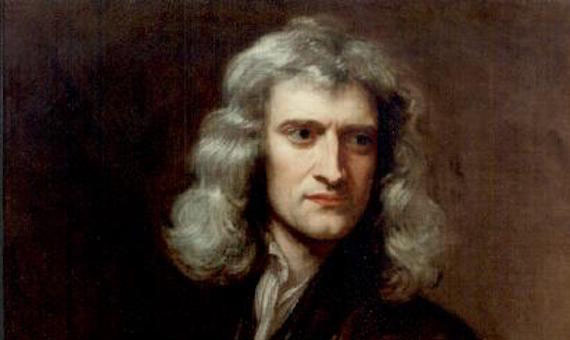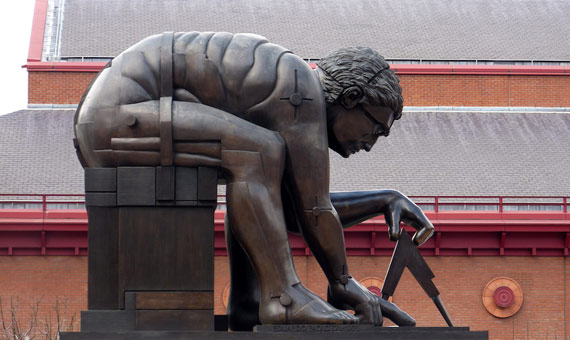We all know Isaac Newton for something that he never did: discovering gravity when an apple fell on his head and woke him up from a nap under a tree. But it was he himself who fed the legend. He was already quite old when he recounted that upon seeing an apple fall, he realized that the gravity that attracts fruit to the ground is the same force that keeps the Moon orbiting the Earth. Later everything was exaggerated, but what is true is that Newton was inspired by everyday events to come up with some simple formulas to describe the motion of anything he saw. He was the first who managed to explain Nature with a few mathematical equations, and not just words.

Isaac Newton (1643-1727) is a model for science to follow, just for this achievement. But in addition, this English physicist made other important discoveries in mathematics, optics and astronomy, despite his childhood school grades noting that he was “lazy and distracted.” Even so, his uncle insisted that he go to the University of Cambridge and it was there that his superior and unique talent began to shine. Bored by the mathematics that his faculty teachers taught him, he invented derivatives and integrals; twenty-seven years would pass without him telling anyone about it, and then he confronted the German polymath Leibniz who had had the same idea. As a professor at Cambridge in the same position recently occupied by Stephen Hawking, Newton discovered that white light is a mixture of colors and is composed of particles. But his great rival Robert Hooke —then responsible for experiments at the Royal Society— rejected his revolutionary theory. Newton, who did not admit the slightest criticism, decided not to publish his work until Hooke died, some thirty years later.
That was the Newton style: heads and tails, like his most famous phrase, “If I have seen further, it is by standing on the shoulders of giants.” Taken from a letter to Hooke, we do not know if it was an exercise in modesty or a goad to his enemy, who was rather short and hunched over. It has also been interpreted as a tribute to Copernicus, Galileo and Kepler, on whose discoveries he relied to write his Principia (Mathematical Principles of Natural Philosophy), the work for which Isaac Newton made history in 1687, thanks to the insistence of Edmond Halley —who the famous comet was named after. Halley financed the book, encouraged him to start it and also to finish it when Newton wanted to abandon it after another quarrel with Hooke, who insisted that the idea for the book had been his. Although the initial idea was to explain why the planets move in elliptical orbits, as Kepler had said, Newton did much more. He discovered the formula of an attractive force (gravity) that affects both heavenly bodies as well as objects on the Earth.

That was the law of universal gravitation, which together with his other three laws of motion accurately described many things: the trajectory of a planet, a comet or a bullet. It also explained the tidal cycle, attracted by the Moon. And that formula even explained that the Earth is not a perfect sphere and why when the Earth spins we are not shot into space (which does happen with objects attached to a wheel). This was one of the classic objections of those who refused to believe that the Earth moves, as Copernicus had said. Galileo explained that anything that spins has inertia to go off on a tangent, such as the inertia we feel when taking a curve in a car. But Newton, standing on the shoulders of his two predecessors, calculated that gravity is 300 times stronger than that inertial force —which is why we remain glued to Earth without noticing it. All these great successes of Newton left science with very high self-esteem, but he would soon retire after suffering a nervous breakdown. He stepped aside science and devoted the last 40 years of his life to theology, politics and searching for the philosopher’s stone.
Comments on this publication